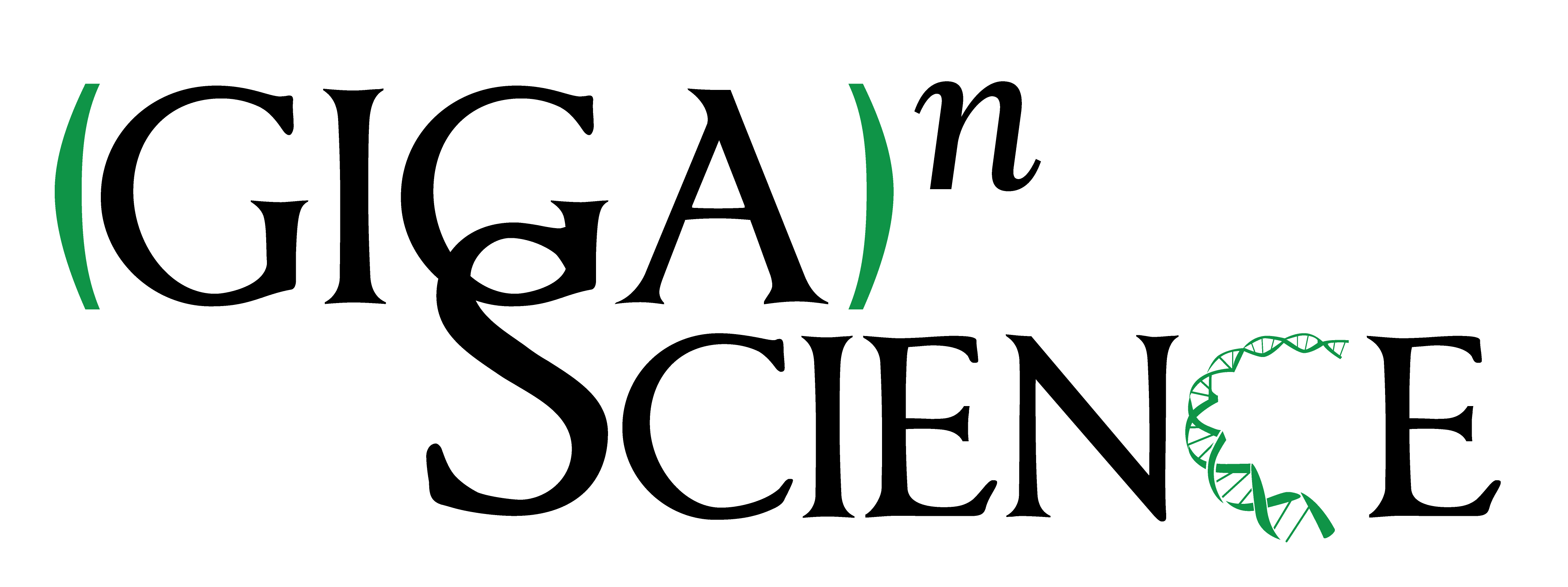A chromosome-level, haplotype-resolved genome assembly and annotation for the Eurasian minnow (Leuciscidae: Phoxinus phoxinus) provide evidence of haplotype diversity
This article has been Reviewed by the following groups
Listed in
- Evaluated articles (GigaScience)
Abstract
In this study we present an in-depth analysis of the Eurasian minnow (Phoxinus phoxinus) genome, highlighting its genetic diversity, structural variations, and evolutionary adaptations. We generated an annotated haplotype-phased, chromosome-level genome assembly (2n = 50) by integrating high-fidelity (HiFi) long reads and chromosome conformation capture data (Hi-C). We achieved a haploid size of 940 Megabase pairs (Mbp) for haplome one and 929 Mbp for haplome two with high scaffold N50 values of 36.4 Mb and 36.6 Mb and BUSCO scores of 96.9% and 97.2%, respectively, indicating a highly complete genome assembly. We detected notable heterozygosity (1.43%) and a high repeat content (approximately 54%), primarily consisting of DNA transposons, which contribute to genome rearrangements and variations. We found substantial structural variations within the genome, including insertions, deletions, inversions, and translocations. These variations affect genes enriched in functions such as dephosphorylation, developmental pigmentation, phagocytosis, immunity, and stress response. In the annotation of protein-coding genes, 30,980 mRNAs and 23,497 protein-coding genes were identified with a high completeness score, which further underpins the high contiguity of our genome assemblies. We performed a gene family evolution analysis by comparing our proteome to ten other teleost species, which identified immune system gene families that prioritise histone-based disease prevention over NLR-based immune responses. Additionally, demographic analysis indicates historical fluctuations in the effective population size of P. phoxinus, likely correlating with past climatic changes. This annotated, phased reference genome provides a crucial resource for resolving the taxonomic complexity within the genus Phoxinus and highlights the importance of haplotype-phased assemblies in understanding haplotype diversity in species characterised by high heterozygosity.
Article activity feed
-

In this study we present an in-depth analysis of the Eurasian Minnow (Phoxinus phoxinus) genome, highlighting its genetic diversity, structural variations, and evolutionary adaptations. We generated an annotated haplotype-phased, chromosome-level genome assembly (2n = 25) by integrating high-fidelity (HiFi) long reads and chromosome conformation capture data (Hi-C). We achieved a haploid length of 940 Mbp for haplome one and 929 Mbp for haplome two with high N50 values of 36.4 Mb and 36.6 Mb and BUSCO scores of 96.9% and 97.2%, indicating a highly complete genome.We detected notable heterozygosity (1.43%) and a high repeat content (approximately 54%), primarily consisting of DNA transposons, which contribute to genome rearrangements and variations. We found substantial structural variations within the genome, including insertions, …
In this study we present an in-depth analysis of the Eurasian Minnow (Phoxinus phoxinus) genome, highlighting its genetic diversity, structural variations, and evolutionary adaptations. We generated an annotated haplotype-phased, chromosome-level genome assembly (2n = 25) by integrating high-fidelity (HiFi) long reads and chromosome conformation capture data (Hi-C). We achieved a haploid length of 940 Mbp for haplome one and 929 Mbp for haplome two with high N50 values of 36.4 Mb and 36.6 Mb and BUSCO scores of 96.9% and 97.2%, indicating a highly complete genome.We detected notable heterozygosity (1.43%) and a high repeat content (approximately 54%), primarily consisting of DNA transposons, which contribute to genome rearrangements and variations. We found substantial structural variations within the genome, including insertions, deletions, inversions, and translocations. These variations affect genes enriched in functions such as dephosphorylation, developmental pigmentation, phagocytosis, immunity, and stress response.Protein annotation identified 30,980 mRNAs and 23,497 protein-coding genes with a high completeness score, providing further support for our genome’s high contiguity. We performed a gene family evolution analysis by comparing our proteome to ten other teleost species, which identified immune system gene families that prioritise histone-based disease prevention over NLR-based immune responses.Additionally, demographic analysis indicates historical fluctuations in the effective population size of P. phoxinus, likely correlating with past climatic changes.This annotated, phased reference genome provides a crucial resource for resolving the taxonomic complexity within the genus Phoxinus and highlights the importance of haplotype-phased assemblies in understanding haplotype diversity in species characterised by high heterozygosity.Competing Interest StatementThe authors have declared no competing interest.
Reviewer 2. Alice Dennis
I previously reviewed this paper previously for Peer-Community-In-Genomics and you can read these comments via the PCI-review page here: https://genomics.peercommunityin.org/articles/rec?id=333]
I actually did three rounds form PCI and was more than happy with the result. I'm attaching them all here in case they didn't all make it to you.
The original preprint linked to the PCI-review is here: https://doi.org/10.1101/2023.11.30.569369.
I have no other concerns on the manuscript. Glad to see it published on GigaScience.
-

AbstractIn this study we present an in-depth analysis of the Eurasian Minnow (Phoxinus phoxinus) genome, highlighting its genetic diversity, structural variations, and evolutionary adaptations. We generated an annotated haplotype-phased, chromosome-level genome assembly (2n = 25) by integrating high-fidelity (HiFi) long reads and chromosome conformation capture data (Hi-C). We achieved a haploid length of 940 Mbp for haplome one and 929 Mbp for haplome two with high N50 values of 36.4 Mb and 36.6 Mb and BUSCO scores of 96.9% and 97.2%, indicating a highly complete genome.We detected notable heterozygosity (1.43%) and a high repeat content (approximately 54%), primarily consisting of DNA transposons, which contribute to genome rearrangements and variations. We found substantial structural variations within the genome, including …
AbstractIn this study we present an in-depth analysis of the Eurasian Minnow (Phoxinus phoxinus) genome, highlighting its genetic diversity, structural variations, and evolutionary adaptations. We generated an annotated haplotype-phased, chromosome-level genome assembly (2n = 25) by integrating high-fidelity (HiFi) long reads and chromosome conformation capture data (Hi-C). We achieved a haploid length of 940 Mbp for haplome one and 929 Mbp for haplome two with high N50 values of 36.4 Mb and 36.6 Mb and BUSCO scores of 96.9% and 97.2%, indicating a highly complete genome.We detected notable heterozygosity (1.43%) and a high repeat content (approximately 54%), primarily consisting of DNA transposons, which contribute to genome rearrangements and variations. We found substantial structural variations within the genome, including insertions, deletions, inversions, and translocations. These variations affect genes enriched in functions such as dephosphorylation, developmental pigmentation, phagocytosis, immunity, and stress response.Protein annotation identified 30,980 mRNAs and 23,497 protein-coding genes with a high completeness score, providing further support for our genome’s high contiguity. We performed a gene family evolution analysis by comparing our proteome to ten other teleost species, which identified immune system gene families that prioritise histone-based disease prevention over NLR-based immune responses.Additionally, demographic analysis indicates historical fluctuations in the effective population size of P. phoxinus, likely correlating with past climatic changes.This annotated, phased reference genome provides a crucial resource for resolving the taxonomic complexity within the genus Phoxinus and highlights the importance of haplotype-phased assemblies in understanding haplotype diversity in species characterised by high heterozygosity.
After initial review in PCI-Genomics (see https://genomics.peercommunityin.org/articles/rec?id=333), a version of this preprint has now been published in the Open Access journal GigaScience (see paper https://doi.org/10.1093/gigascience/giae116), where the paper and peer reviews are published openly under a CC-BY 4.0 license. The PCI-Genomics reviewers were consulted if they had any additional comments and these were as follows.
Reviewer 1: Henrik Lantz
I previously reviewed this paper previously for Peer-Community-In Genomics and you can read these comments via the PCI-review page here:
https://genomics.peercommunityin.org/articles/rec?id=333
The original preprint linked to the PCI-reviews is here:
https://doi.org/10.1101/2023.11.30.569369.
I am satisfied with the latest version of manuscript.
-

-

-

-

-

-

-

